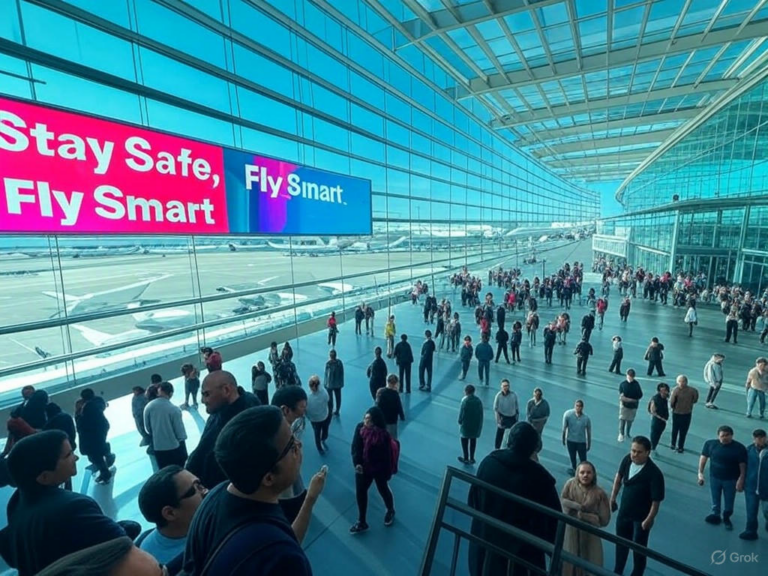
2025 AI Cybersecurity Report: MixMode’s 2025 State Insights
The Evolving Role of AI in Cybersecurity
In the fast-paced world of AI cybersecurity, the line between defense and danger is blurring faster than ever. MixMode’s 2025 State of AI in Cybersecurity Report highlights how artificial intelligence is transforming both sides of the battlefield, empowering attackers while offering unprecedented tools for protectors. Drawing from extensive research, real-world breaches, and expert insights, this report paints a vivid picture of emerging threats and the urgent need for proactive, autonomous security systems.
Have you ever wondered how a single innovation could escalate cyber risks overnight? Well, that’s exactly what’s happening with AI cybersecurity advancements, where 87% of organizations have already faced AI-powered attacks, according to the report. As threats evolve, MixMode emphasizes the shift toward predictive defenses that learn and adapt in real time.
Key Findings from MixMode’s 2025 Insights
- AI cybersecurity threats are escalating, with a surge in sophisticated, machine-driven assaults demanding immediate, cutting-edge responses.
- Outdated detection methods are falling short against the adaptability of these new menaces.
- MixMode’s third wave AI is stepping up as a game-changer, bridging the gap between rapid threats and robust enterprise safeguards.
Why AI Is Fueling Both Problems and Solutions in AI Cybersecurity
AI cybersecurity is a double-edged sword, enhancing defenses while arming cybercriminals with tools to automate and refine their tactics. The MixMode report reveals that these attackers are using AI to scale operations and evade detection, making it essential for businesses to fight back with equally intelligent systems. For instance, think about how a simple phishing email can now be generated in seconds to mimic your voice or style—it’s that level of sophistication we’re dealing with.
Actionable tip: Start by auditing your current tools to see if they can handle AI-driven anomalies. If not, it’s time to explore upgrades that prioritize adaptability, as highlighted in the report’s data.
Navigating the 2025 Threat Landscape in AI Cybersecurity
The 2025 landscape for AI cybersecurity is dominated by attackers wielding AI for everything from ransomware to supply chain infiltrations. MixMode’s report breaks down recent incidents, showing how these threats are not just growing but evolving at an alarming rate. It’s like a high-stakes game of chess, where every move anticipates the next.
Spotlight on Recent Attack Trends
- Change Healthcare Ransomware in 2024: This breach demonstrated how AI cybersecurity tools can spot unusual traffic patterns early, stopping extortion before it escalates.
- Snowflake Data Breach in 2024: Predictive analytics played a key role, identifying odd behaviors and halting data theft in its tracks.
- PyPI Supply Chain Attack in 2025: Here, malicious payloads slipped through cracks, but MixMode’s AI flagged “off-normal” activities that legacy systems ignored, offering a real-world lesson in vigilance.
Imagine your business facing a similar scenario—could your systems detect it? This is where AI cybersecurity shines, by analyzing patterns that humans might miss.
How AI Is Amplifying Sophisticated Threats
With AI cybersecurity threats on the rise, even novice hackers can launch advanced attacks using automated tools. This adaptability means defenses must be equally dynamic, reducing the window for response from minutes to seconds. As the report notes, the automation behind these attacks is turning once-rare breaches into daily headlines.
Why Traditional Defenses Are Falling Short in AI Cybersecurity
In the realm of AI cybersecurity, old-school methods like rule-based systems are struggling to keep up with the speed and creativity of modern threats. The 2025 PyPI attack is a prime example, where systems drowned in irrelevant data and overlooked subtle signs of intrusion. It’s not just about having tools; it’s about having ones that evolve.
| Detection Method | Strengths | Weaknesses |
|---|---|---|
| Signature-Based (Legacy) | Handles familiar threats well | Overlooks new variants and takes too long to update |
| Rule-Based (Legacy) | Straightforward and easy to review | Can’t adapt quickly to AI cybersecurity shifts |
| Third Wave AI (MixMode) | Adapts on the fly to catch emerging dangers | Needs time to learn your specific environment |
What if your defense system was as smart as the attackers? That’s the promise of advanced AI cybersecurity solutions, which could turn the tide in your favor.
MixMode’s Third Wave AI: Revolutionizing AI Cybersecurity
MixMode’s third wave AI marks a significant leap in AI cybersecurity, moving beyond static rules to create truly predictive defenses. This technology learns from behaviors, connects data across platforms, and responds to threats as they unfold, making it a must-have for forward-thinking organizations.
Key Features of This AI Cybersecurity Innovation
- Self-Supervised Learning: It adapts continuously to new threats without needing manual tweaks, keeping your defenses fresh.
- Behavioral Analytics: By spotting deviations from normal patterns, it catches issues in real time, much like a vigilant guardian.
- Full Observability: This pulls together data from clouds, networks, and user activities for a complete view, essential in AI cybersecurity.
- Predictive Response: Instead of reacting to breaches, it identifies potential attacks early, stopping them before harm.
- Noise Filtering: It sifts through vast amounts of data to focus on what’s truly important, saving your team valuable time.
In practice, these capabilities have helped protect critical infrastructure and prevent major data losses. For your business, that could mean peace of mind in an uncertain digital world.
Top 7 Trends Shaping AI Cybersecurity in 2025
- Explosion of AI-Generated Malware: Cybercriminals are using AI to create and refine code quickly, leading to a flood of new variants.
- Autonomous Ransomware Evolves: This threat now selects targets and adapts payloads on the fly, challenging even robust AI cybersecurity measures.
- Enhanced Phishing Attacks: Deep learning powers convincing messages and calls, making it harder to spot fakes.
- AI in Supply Chain Risks: As seen in the PyPI case, attackers embed threats in software, demanding smarter detection tools.
- Cloud-Based Challenges: Blending into everyday workflows, these threats require AI cybersecurity to uncover hidden anomalies.
- Expanding Attack Surfaces: AI-driven bots are multiplying entry points, from devices to networks.
- The Defensive AI Boom: Companies like MixMode are investing heavily to stay ahead, fostering an arms race in AI cybersecurity.
Which of these trends hits closest to home for you? Understanding them is the first step to building resilience.
Case Study: MixMode Tackles the 2025 PyPI Attack
The PyPI attack highlighted the complexities of AI cybersecurity when obfuscated payloads targeted cloud systems. MixMode’s AI stepped in by modeling authentication patterns and detecting anomalies that traditional tools missed. By correlating logs and linking to MITRE ATT&CK frameworks, it enabled swift containment and detailed analysis.
This example shows how proactive AI cybersecurity can turn a potential disaster into a manageable incident, offering a blueprint for others.
Expert Tips: Preparing for the Future of AI Cybersecurity
As AI cybersecurity becomes indispensable, experts from the Ponemon Institute and MixMode agree that 70% of professionals see it as key to spotting elusive threats. This isn’t just about technology—it’s about empowering your team to work smarter.
Essential Strategies for AI Cybersecurity Readiness
- Adopt Adaptive Platforms: Look for systems that grow with your needs, learning from your unique environment.
- Monitor Key Data Streams: Combine insights from clouds, networks, and apps for a fuller picture.
- Automate Responses: Let AI handle routine detections so your experts can focus on bigger strategies.
- Develop AI Policies: Train your team on safe AI use and risk management to avoid internal vulnerabilities.
Start small: Assess one area of your security setup and integrate an AI element. The results might surprise you.
Wrapping Up: Embracing AI Cybersecurity for Long-Term Protection
MixMode’s 2025 report drives home a critical point—AI cybersecurity is no longer optional; it’s essential to outmaneuver intelligent attackers. By adopting platforms like third wave AI, organizations can build defenses that are agile, insightful, and ready for whatever comes next. Remember, in this evolving landscape, staying proactive isn’t just smart; it’s survival.
What are your thoughts on these insights? Share in the comments, explore more resources on the MixMode site, or dive into their full report for deeper strategies. Let’s keep the conversation going—your experiences could help others stay secure.
References
- MixMode Press Release. “MixMode Releases 2025 State of AI in Cybersecurity Report.” PR Newswire. Accessed 2025.
- MixMode Official Site. https://mixmode.ai.
- MixMode Blog. “The Rise of AI-Driven Cyberattacks.” MixMode Blog.
- MixMode Blog. “Cybersecurity Using AI.” MixMode Blog.
- MixMode Blog. “Why the 2025 PyPI Attack Signals a New Era in Cloud Risk.” MixMode Blog.
- Exploding Topics. “AI Cybersecurity Trends.” Exploding Topics.
- Upwork. “How AI is Used in Business.” Upwork.
- MixMode Resource Library. https://mixmode.ai/resource-library/.
AI cybersecurity, MixMode, 2025 cyber threats, third wave AI, predictive defense, AI-driven threats, cybersecurity trends, autonomous security, cyberattack prevention, AI defense strategies






